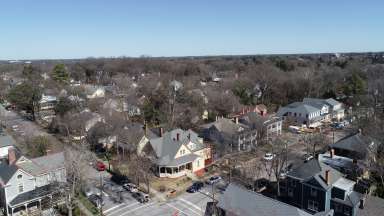What is Zoning?
Zoning is the act or process of partitioning a city, town, or borough into zones reserved for different purposes (such as residence or business) and is intended to promote an orderly pattern of development. Zoning ensures that the way land is used is compatible with the area. For example, proper zoning prevents an industrial building from being built in a neighborhood.
Raleigh has a set of ordinances by which such zones are established and regulated. The first step to knowing how a piece of property can be used or what can be built on a lot within the City of Raleigh is to learn the property’s zoning.
Below are some terms that are frequently used when discussing zoning. View Raleigh's zoning services.
- Applicant: Person(s) applying to rezone a property. Anyone can submit an application for a rezoning for any property. The only requirements are to pay the application fee, have a pre-application conference with the Planning Department staff, and hold a neighborhood meeting.
- Built Environment: All the physical, human-made surroundings that make up a city, such as buildings, parks, streets, utility poles, etc.
- Frontage: An additional layer of zoning that provides more detail on how the building relates to the street; frontages regulate how far back a building can be, where the parking is located, required street landscaping, and other design elements.
- Condition; Conditional Use (CU): Conditions can be offered by the owner to create more restrictive requirements for their property. They must be enforceable by the city, and be more restrictive than city code.
- Density: The number of dwelling units (house, apartment, townhouse) that can be built on a certain amount of land.
- Intensity: How much land use will affect the surrounding area. For example, a three-story mixed-use building with apartments on top and retail on the bottom is a more intense use than a single-family home.
- Rezoning: The process to change the zoning district designation, or what can and cannot be built on a piece of land.
- Overlay District: This is an additional layer of zoning designed to protect the characteristics of a specific area of the city. While the zoning applies to large districts, overlays apply to areas such as historic districts, watersheds, or the airport to protect the special character of the area.
- Mixed-use Zoning (_X): The zoning code has multiple types of mixed-use zoning districts. These range from Residential Mixed-use (RX), where a variety of homes and limited retail is permitted, to Industrial Mixed-use (IX), where light manufacturing, retail, and limited housing is permitted. These districts always have a building height component. For example, an RX-3 district has a three-story height limit.
- Residential Zoning (R_): These zoning districts permits different types of dwelling units at varying densities. They can range from low density, such as single-family homes in a Residential-4 (R-4) district permitting up to four units per acre of land, to a moderate density Residential-10 (R-10) district, which permits up to ten units per acre of land.
- Zoning: The local law that regulates how property can be used: residential, commercial, industrial, etc. It also regulates building height and spacing, building type, how the building relates to the street, and other aspects of the built environment.
- Zoning District: The area in which a specific set of regulations apply.
